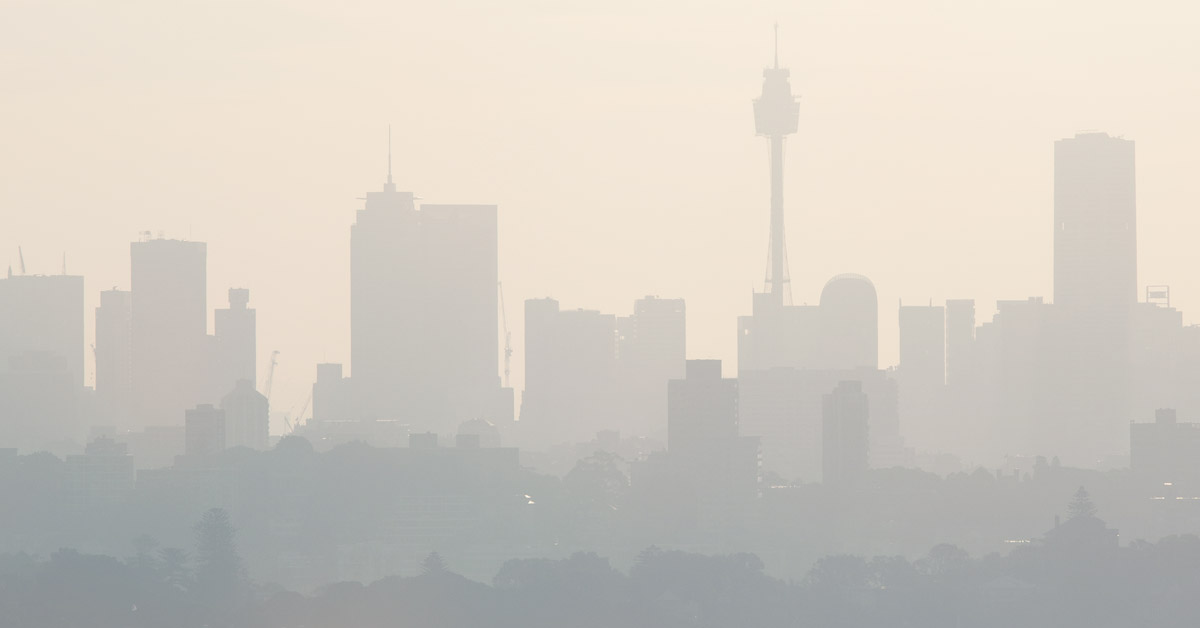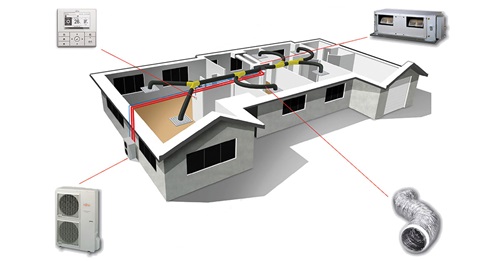How To Improve Indoor Air Quality

When the air quality outside is poor, especially in the event of bushfires or high volumes of pollution, it’s important to keep indoor air quality at its best, particularly when Australians spend 90 percent of their time indoors. [1]
Poor air quality can lead to respiratory conditions, including shortness of breath and aggravated asthma, and irritation of the eyes, nose, or throat.
There are various ways to improve the air quality in your home, which can help manage the health of everyone in the home or office environment. For those running an air conditioning system can also assist in keeping the indoor air free from nasties that might be circulating outside.
Do air conditioners improve air quality?
A common air conditioning myth is that all systems use outside air to cool or heat the indoor air, however, this is not always the case. When the air quality is poor outside, it’s still ok to run an air conditioning system as it can improve the air quality inside your home.
The air conditioning system consists of an indoor and outdoor unit, which is linked by pipes with refrigerant gas flowing between the indoor and outdoor units. The outdoor unit consists of a fan, condenser coil, and compressor while the indoor unit consists of evaporator coils, a circuit board, a filter, and a fan.
The indoor unit pulls air into the unit, which passes the refrigerant-filled evaporator coils. The refrigerant inside absorbs heat as it changes from a liquid to a gaseous state. To keep cooling efficiently the air conditioner has to convert the refrigerant gas back to a liquid again. To do that the compressor puts the gas under high pressure. All the extra heat created by compressing the gas is then evacuated to the outdoors with the help of condenser coils and a fan. As the heat is removed and the gas cools, it changes back to liquid and the process starts all again. If the unit is switched to heating mode, the process is reversed.
While air is being pulled into and blown out of the indoor unit it travels through filters, which remove dust and particles from the air. Fujitsu General’s Lifestyle Wall Mounted Split air conditioning systems with a Sensitive Choice approved an apple-catechin filter captures fine dust, invisible mould spores and harmful microorganisms that are absorbed onto the filter by static electricity, where further growth is inhibited and deactivated by the polyphenol ingredient extracted from apples.
Additionally, it allows you to control temperature and assist with humidity levels in the home. While temperature and humidity can be very uncomfortable for you, especially in summer when the air is heavy and moist, the humidity alone can cause building damage from condensation. Humidity can also contribute to mould growth [2] and radon gas [3], a naturally occurring colourless and odourless radioactive gas.
It is highly recommended that you maintain your air conditioner by keeping the filters clean and the air conditioning system periodically serviced by a licensed technician. For more information on how to keep filters clean, watch our ‘how to’ video.
For those seeking additional ways to improve their home air quality, here are some additional tips to help keep the indoor air quality at its best.
Fresh is best
When the outside air quality index is ok, and the air conditioning system is off, one way to improve the air quality indoors is to open doors and windows to let the air circulate. By moving the stale air you are replacing the oxygen, avoiding mould growth by reducing condensation, and removing dust. With bushfires and emissions from traffic and industries common in Australia, there is no guarantee that the air will be fresh and beneficial as the outside quality is susceptible to the environment. Before opening windows and doors, check the air quality index status via individual state government websites. [4]
Cleaning up
Staying on top of household cleaning can be difficult, but when it comes to your health there are no cutting corners. Carpets and rugs can harbour chemicals and allergens such as dust mites, some of which can become airborne. Dusting and vacuuming regularly will help to remove these from circulating in your home. Additionally, wiping down benches and bathrooms can remove mould spores that may impair your air quality. You will need to clean your home regularly for this to be effective as once there is mould it can be difficult to remove.
Indoor plants
While the air outside may be of poor quality, you can improve the air indoors by introducing plants to create oxygen and remove toxins [5]. While pollen can be a major issue with some flowering plants, there are many other options, such as a Peace Lily, Spider Plant, or Devil’s Ivy that offer air purifying capabilities you may be looking for without affecting someone with a sensitivity or hay fever.
With bushfire season, air pollution is at risk of being poor on a regular basis. You can keep yourself healthy by taking measures to improve the air quality in your home. You may be unable to control the quality outside, but with simple steps, the indoor air quality can be kept healthy and comfortable all year round. Contact Fujitsu General to learn more about how our air conditioners can help improve the air quality in your home.
How to improve the air quality in your home: Frequently asked questions
How do air conditioning systems improve indoor air quality?
Fujitsu General air conditioners can help improve the indoor air quality of your home using a number of clever features.
Our lifestyle models are equipped with filters designed to trap dust, pollen and other airborne particles, preventing them from circulating into your home. Through the use of dry mode our air conditioners also help to keep indoor humidity at a comfortable and safe level, reducing the risk of hazardous mould and mildew from growing inside your home.
Many of our wall mounted air conditioners can also be programmed to bring in a small amount of fresh air from outside. This enhances the ventilation inside your home, helping to dilute any pollutants that were not filtered out previously
What are the specific health risks associated with poor indoor air quality?
There are a number of health risks that can result from poor indoor air quality. These issues can be short-term or aggravate lasting conditions. Some of the health conditions that may be triggered by poor indoor air quality include:
Respiratory issues, such as asthma attacks and bronchitis
Allergies flaring up due to exposure to dust mites and pollen
Headaches, dizziness and fatigue
Lasting health effects, such as heart disease and cancer, can be caused by a poor standard of indoor air quality [6]
How often should air conditioning filters be cleaned or replaced?
The frequency with which the filters in your air conditioning system should be cleaned or replaced will depend on how often the unit is used.
For air conditioners that are used daily, the filter should be checked every month. Clean your filter when it shows visible signs of dirt or damage.
If you only use your air conditioner occasionally, cleaning your filter once every 3 months should be sufficient.
Remember that your air conditioner will perform better with a clean filter that is free from a build up of dust or damage.
For more information, please see our guide on air conditioner maintenance.
What are the signs that the indoor air quality is poor and needs attention?
There are a number of indicators that your home air quality requires attention, including:
Visible accumulation of dust on indoor surfaces, indicating poor ventilation
Increased allergic reactions, respiratory issues or headaches experienced by you or your family
Signs of excessive humidity around the home, such as condensation forming on windows or mould growth
Inadequate ventilation, creating a hot and stuffy indoor environment
[2] https://www.nationalasthma.org.au/news/2016/indoor-humidity
[3] http://przyrbwn.icm.edu.pl/APP/PDF/132/app132z3-IIp051.pdf
[4] https://www.dpie.nsw.gov.au/air-quality/current-air-quality
[5] https://www.bhg.com.au/best-air-cleaning-plants
[6] https://www.dcceew.gov.au/environment/protection/air-quality/indoor-air


.tmb-tmb420.jpg?sfvrsn=5c4be2e1_1)


